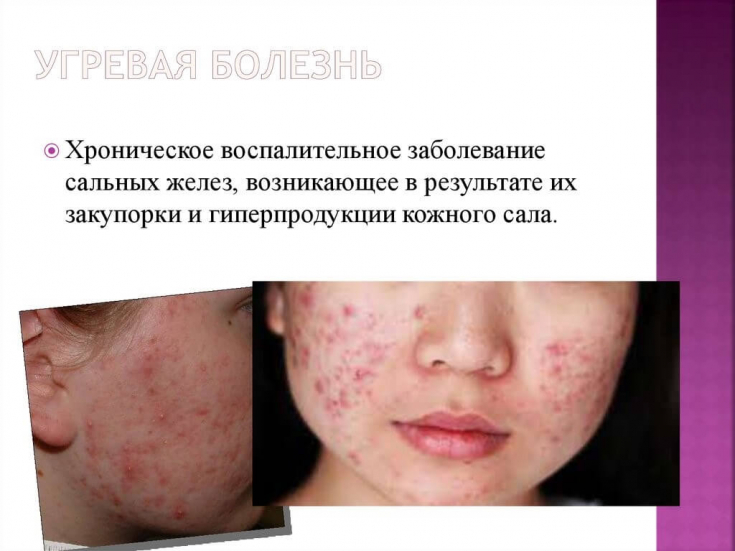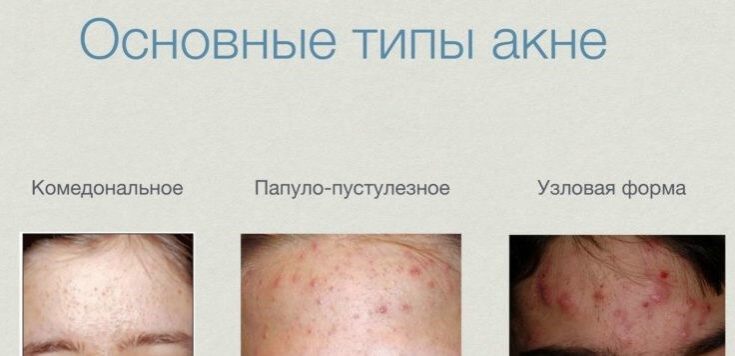Acne − a chronic disease of the sebaceous glands, which affects 9% of the world's population. In terms of prevalence, acne ranks eighth among all human diseases and third − by the frequency of patients visiting a dermatovenereologist.
This disease mainly manifests in the puberty, with a physiological increase in the level of steroid hormones (“juvenile acne”), and in the period from 18 to 20 years in most cases − regressing.
However, in some patients, this dermatosis continues or first occurs after the age of 20.
Find out in the article on estet-portal.com for up-to-date data that can determine the cause and conduct effective treatment of acne in case of endocrine pathology.
- The problem of acne among adult patients in the practice of a dermatologist
- Variations in the manifestations of the clinical picture of acne
- The role of hyperandrogenism in the development of acneand
The problem of acne among adult patients in the practice of a dermatologist
In recent decades, there has been a steady increase in the number of women who are diagnosed with acne disease aged 20 years and older.
Follow us on Instagram!
According to the literature, acne is diagnosed in 54% of women over the age of 18. The disease "Acne disease" remains significant and does not lose its relevance until now.
Acne is a multifactorial disease of sebaceous apparatus.
Approaches to the treatment of severe acne
The leading links of pathogenesis are a combination of four main factors:
- increased secretion of sebum production;
- violation of the processes of keratinization of the ducts of the sebaceous glands;
- intense colonization with anaerobic bacteria Propionibacterium acnes;
- release of inflammatory mediators with the formation of an inflammatory reaction in the skine.

Variations in the manifestations of the clinical picture of acne
Clinical manifestations of inflammation have a wide range: from small superficial papulo-pustular elements to deep nodulocystic ones.
The exact sequence of factors leading to the development of acne is not yet fully understood. However, the first step in this process is the formation of a microcomedone, which is the precursor to comedones, papules, and pustules.
The formation of microcomedone is due to an increase in sebum production due to stimulation of the sebaceous glands by androgens.
While sebum secretion increases, proliferation increases and keratinization in the middle of the follicle decreases, which causes blockage of the sebaceous duct.
This buildup results in a microcomedone and subsequently develops into more clinically visible, closed or open comedones.
Colonization of the gland ducts by P. acne and the formation of inflammatory mediators leads to the development of an inflammatory reaction.
An increase in sebum production usually occurs during puberty, and can also be observed with hyperandrogenismand.
Acne pathogenesis depending on the age period of the patient
The role of hyperandrogenism in the development of acne
Hyperandrogenism − these are changes in the female body that occur due to dysfunction in the synthesis, transport, metabolism of androgens and their effects on androgen-sensitive target organs.
Hyperandrogenism, as one of the leading factors acne occurrence, can manifest itself:
- an absolute increase in the concentration of androgens in the blood plasma, of ovarian or adrenal origin;
- occur due to increased sensitivity of skin receptors to normal and even reduced concentrations of androgens.

The non-classical form of congenital adrenal dysfunction is characterized by hyperandrogenism, which has its own specific clinical and laboratory signs, namely:
- can be traced to hereditary character of the disease;
- exacerbation of acne in most cases due to stressful situations;
- predominance of comedones over inflammatory elements;
- hirsutism in androgen-dependent areas of the body (face, chest, lower abdomen, lower extremities);
- obesity of the androgenic type with a predominance of deposition of fat on the anterior abdominal wall;
- severe seborrhea.
Retinoids: a revolutionary tool for fighting acne and photoaging
In hormonal studies an increase in blood plasma content of:
- 17-hydroxyprogesterone;
- dehydroepiandrosterone sulfate;
- free testosterone.
The increase in free testosterone concentration in the plasma of patients with acne may be due to a decrease in concentration of globulins, which are synthesized in the liver and bind sex hormones.
65% of circulating testosterone binds to globulins, 33% binds to albumin, and 2% remains in the active free form.
In women, an important pathogenetic link in hyperandrogenism is a violation of the attachment of androgens to specific globulins that bind sex hormones.
Therefore, in the management of acne, it is very important for a dermatologist to assess the endocrinological status of the patient.
Methods to increase the duration and effectiveness of botulinum toxin action







Add a comment